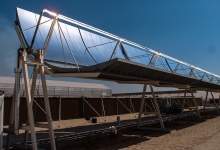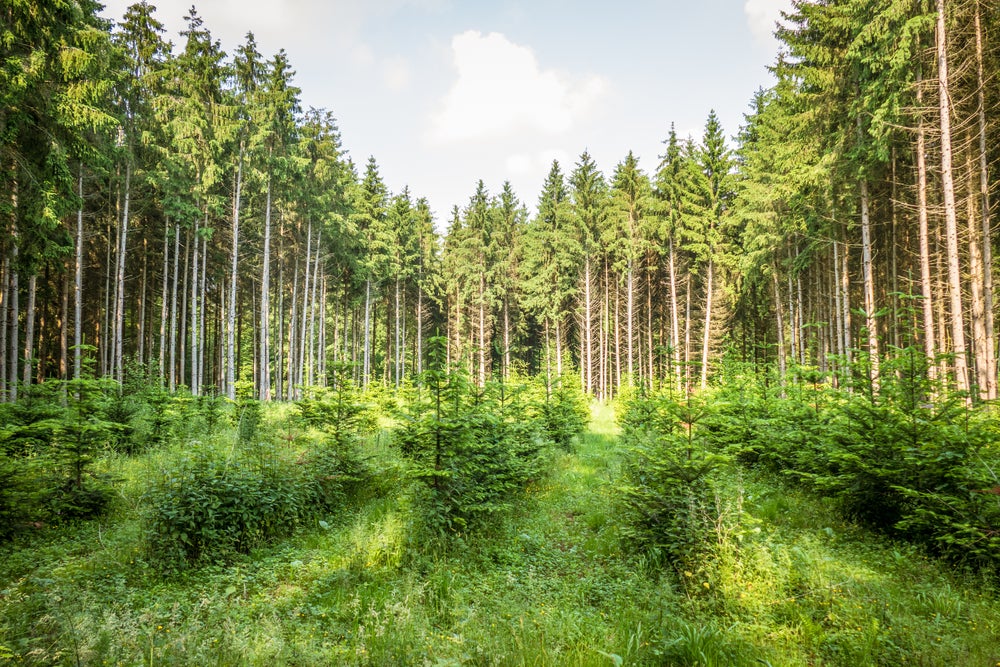
Little more than a year-and-a-half ago engineer Bill Watts, biomimicry advocate Michael Pawlyn and an international environmental organisation, the Bellona Foundation, vowed they would ‘turn the [Sahara] desert green’, with an ambitious project featuring a salt-water cooled greenhouse for producing cucumbers and electricity and heat generation to be made via sun soaked mirrors and steam driven turbines.
After an intensive ten month building period funded by Yara International ASA and Qatar Fertilizer Company (QAFCO), the Sahara Forest Project was born in one of the driest areas of Qatar. Nine months on, the Sahara doesn’t quite resemble rural farmland, but the project did celebrate its first harvest of cucumbers in December 2012 and its first barley crop in April this year.
"We have managed to continue highly productive agriculture throughout the hot summer and we are doing that with a 50% saving in fresh water compared to the conventional way of doing things," said Pawlyn, speaking at the Sustainability Innovation Summit in London this month.
How well do you really know your competitors?
Access the most comprehensive Company Profiles on the market, powered by GlobalData. Save hours of research. Gain competitive edge.

Thank you!
Your download email will arrive shortly
Not ready to buy yet? Download a free sample
We are confident about the unique quality of our Company Profiles. However, we want you to make the most beneficial decision for your business, so we offer a free sample that you can download by submitting the below form
By GlobalDataThe Sahara project is centred on the complexity and ingenuity of bio-mimicry, as opposed to ‘simple’ human made systems. For example, the seawater-cooled greenhouse where the cucumbers are grown is inspired by technology from the Namibian fog-basking beetle, which has evolved a way of harvesting its own fresh water in a desert.
See Also:
"For just about every challenge we face their will be examples we can turn to in nature," Pawlyn explained.
"I do think it is going to be one of the most powerful sources of innovation and its going to facilitate the growing partnership from the industrial age to the ecological age"
Utilising abundant resources
One of the most impressive principles of the Sahara project is how it uses saltwater – something that is in abundance – to drive all elements of the project: electricity, cooled greenhouses and to produce freshwater for irrigation or drinking.
In order to produce electricity it uses a concentrated solar power plant (CSP), which uses mirrors to concentrate energy from the sun to create high enough temperatures to make steam, to drive a steam turbine, which in turn drives a generator to produce electricity.
This is coupled with a saltwater cooling system so that waste heat from the CSP process is dissipated using the roofs of the greenhouses in the complex.
It’s this type of forward thinking, complementary ‘connect the dots’ system that makes the Sahara Forest Project both ambitious and unique.
Everything in the project is synergised together on purpose, to minimise waste and to tie together different aspects of established technologies so they work together in a complex flowing system – much like the body of a Namibian fog-basking beetle.
At its current scale this intertwining of technologies is working; it is scaling the project up that will be one of its creators’ next challenges.
"What this is moving towards is a kind of ecosystem model in which you have a highly productive system with minimal waste," said Pawlyn.
"This is the kind of thing we are going to need to do if we are to move from rather simplistic industrial systems to industrial systems of the future."
The Sahara Forest team are now focusing their efforts in Aqaba, Jordan, where, after three feasibility studies that have just been completed, they will construct a 20-ha (200.000 sqm) Sahara Forest Project Demonstration Center, which will serve as a centre for innovation, competence building and demonstration of the economic viability of the Sahara Forest Project concept.
Related content
Germany’s renewable energy push: a promising or poorly planned initiative?
Germany’s vigorous support for renewable energy may have become more than the country can handle.
Gotland: the epicentre of the EU’s smart grid project
The island of Gotland, approximately 90km east of mainland Sweden, has become the epicentre of a three-year smart grid trial aimed at meeting the EU’s climate change target of reducing carbon emissions by 20% before 2020.


.gif)


